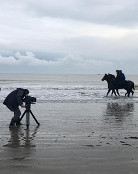Donn's Articles » Fixture list
Fixture list
It is usually at this time every year that the fixture list is announced for the calendar year that will follow. The list is generally prepared in the weeks and months that lead up to the Galway Festival, and the deal has historically been rubber-stamped at the Horse Racing Ireland board meeting that takes place today. Not this year though.
After years of sustained growth in the fixture list in terms of both breadth and depth, the number of scheduled meetings announced at this time last year for the 2010 calendar year was reduced by seven to 345, mainly because of a reduction in the horse population and in available funds. The fear is that, with the horse population down 10% on last year and funding for racing on a less solid footing as things stand than it has been for years, there will be a significant reduction in fixtures in 2011. HRI say that there will be a reduction, but that it won’t be that dramatic, perhaps on a similar scale to the reduction from 2009 to 2010, which is good news for all of racing’s stakeholders, but it is unlikely that the list will be finalised now before September.
Coincidentally, there is a similar delay in the UK this year. The yield in 2009 from the Levy, on which the fixture list is largely dependent, was down 20% on the 2008 figure, and the estimated figure for 2010 is down another 17%. BHA Chief Executive Nic Coward has accused bookmakers of “accessing loopholes to avoid providing fair funding to the sport via the Levy.” Of course, there is a wider debate brewing in the UK concerning the relevance of the Levy in an era in which betting exchanges and on-line betting operators are becoming progressively prolific, and William Hill’s announcement yesterday that they will move their telephone operation to Gibraltar by the end of this year merely exacerbated the need for the debate, but that is another issue for another day.
The situation in Ireland is not wholly dissimilar to that in the UK. While we don’t have a levy system, we do have a betting tax, which, until recent years, generated more money for the exchequer annually than the funding that government provided to HRI. It doesn’t any more.
We have visited this issue before. In 2001, when the Horse and Greyhound Racing Fund was set up, the total amount bet by Irish punters was around €1.3 billion and the total tax take was €68 million. However, in 2009, with total betting estimated at around €4 billion (an increase of over 200%), the total tax take had reduced to €31 million (a decrease of 54%). The reason for the discrepancy is the changing landscape of betting – which couldn’t have been foreseen when the Fund was set up – that has led to a seismic shift in betting behaviour from the racecourse and the betting shop to the mobile phone and the internet.
HRI has long since strived to put the funding of racing on a solid foundation. They are correct to do so. It is not satisfactory that for years now racing has had to go cap in hand to Leinster House on an annual basis, reliant on government funding that could in theory be used for any one or combination of innumerable worthy causes, and which can be determined by the whims of the government of the day.
Also, the link between the tax-revenue generated by the total amount of money bet by Irish punters and funding for Irish racing remains tenuous. The amount of money bet on Irish racing is a relatively small proportion of the total amount of money bet, and we have moved on a long way from the days when you could only really bet on horse racing or greyhound racing. However, An Taoiseach Brian Cowen provided racing with a huge fillip in May, when he announced that a more sustainable system of support had to be put in place to ensure that Irish racing and breeding continued to thrive. Specifically, he stated that the government would “introduce legislation to ensure that overseas betting providers comply with a licensing regime that will permit them to sell their products into our jurisdiction.”
The initial hope that the legislation would be in place before the Dáil’s summer recess – which would have facilitated planning for 2011 with some certainty – was unrealistic in the extreme. However, An Taoiseach did say that the legislation would definitely be in place before the end of the year, and that is encouraging, if a little nervously so.
It is an admirable objective, and racing’s stakeholders should be thankful that there is a commitment at the very highest level to give racing’s funding a solid foundation, but it is a huge undertaking. Many jurisdictions have sought to solve the problem of internet betting across national frontiers in the last decade, and none have completely succeeded. It is also a little worrying that government revenue projections based on an alteration in the betting tax system can be seriously flawed, as we saw with the proposal to increase the betting tax in shops from 1% to 2% last year.
The introduction of the legislation is one thing, its implementation and the effective policing of it is quite another. We can wait another month or two for the 2011 fixture list, but we may have to wait a little longer to see the future funding of Irish racing secured.
© The Racing Post, 27th July 2010


 Follow Donn
Follow Donn